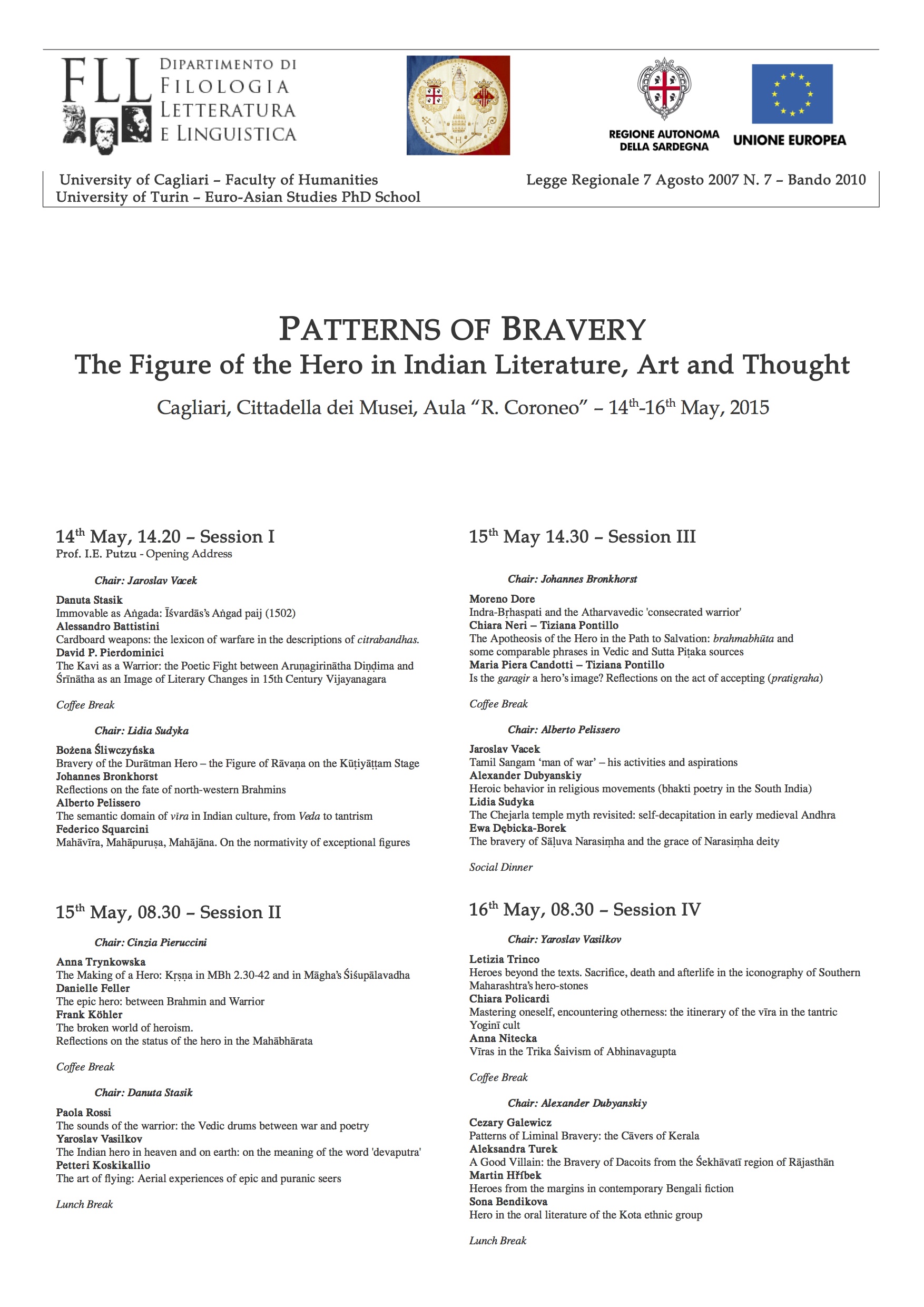Are words an instrument of knowledge? And, if so, what sort of? Are they an instance of inference insofar as one infers the meaning on the basis of the words used? Or are they are an independent instrument of knowledge, since the connection between words and meanings is not of inferential nature?
Two (or three) different narratives on Yoga, Mīmāṃsā, Viśiṣṭādvaita Vedānta etc.
Some authors tend to think that once upon a time there was one Yoga and that later this has been “altered” or has at least “evolved” into many forms. According to their own stand, they might look at this developments as meaningful adaptations or as soulless metamorphoseis.
Graham Priest on why study Asian philosophy
Graham Priest explains in a blog post why one should study “Eastern” philosophy (his label, probably because standard philosophy is in fact “Western” philosophy).
His post points to two reasons:
- One better understands one’s own culture if one is confronted with another one
- There is progress in philosophy and new ideas can contribute to it, since progress does not arise ex nihilo.
It is difficult not to agree. I had discussed Priest’s first point here and his second point here, while referring to an interview with Jay Garfield, and the posts have raised interesting discussions in the comments.
Since, however, the first post is dated to 2010 and the second one to 2013, it may be time to ask you, dear readers, again: What should be the reasons for engaging with Asian philosophies?
Philosophy’s crudity and Narrative’s epistemological value
A recent post by Elisabeth Barnes raised a discussion in several blogs about philosophy’s “casual cruelty”. Philosophers, it is said, argue about basic human rights in an abstract way, with thought experiments daring to ask whether it would be ethical to let die disabled children/abort disabled foetuses/prohibit disabled people to have children/… . Philosophers do not even stop speculating about the suppression of disabled people, Barnes continues, when they have a real disabled person in front of them.
Is there “African Philosophy”? Or just Greek, German…and Indian Philosophy?
Don Howard recently uploaded an interesting paper on cross-cultural philosophy on academia.edu.
The paper discusses stimulating topics, such as why we* react ackwardly when we hear of “African philosophy” or “Native American philosophy” and why these labels sound like a contradictio in objecto.
175th Philosophers’ Carnival
The 175th Philosophers’ Carnival is ahead of schedule, here. It links to interesting posts, mostly on epistemology of testimony, philosophy of language, modal logic, ethics and theology, which are all more or less my favourite topics. Thus, I guess I should not complain about the lack of diversity in the posts mentioned.
Patterns of Bravery. The Figure of the Hero in Indian Literature, Art and Thought
Cagliari, 14th--16th May 2015
Tiziana Pontillo signalled me the conference mentioned in the title. You can download the flyer here.

From the point of view of methodology, let me praise T. Pontillo for the fact that she will give two joint papers. Let us all learn from each other and dare more cooperative work (if we enjoy it)!
Human beings as animals
Humans are not animals according to Descartes’ distinction of res cogitans and res extensa. They are also not animals according to many Christian theologians (Jesus came to save humans, not animals). Perhaps humans are not (only) animals also according to the Aristotelian definition of human beings as “rational animals”, which attributes to humans alone a distinctive character. Humans are also quite different than animals when it comes to their respective rights. But here starts a moot point:

from http://www.popsci.com/should-animals-same-rights-people
Leiden Summer School on Vedic, Śaiva Literature, Sanskrit theatre, Old Javanese…
Daniele Cuneo, who will be holding the class at the Slot 4, asked me to forward the relevant information concerning the Indology program of the Leiden Summer School in Languages and Linguistics (Monday 13 July-Friday 24 July 2015):
Workshop “Language as an independent means of knowledge in Kumārila’s Ślokavārttika“
Workshop
Language as an independent means of knowledge in Kumārila’s Ślokavārttika
| Time: | Mo., 1. Juni 2015–5. Juni 2015 09:00-17:00 |
| Venue: | Institut für Kultur- und Geistesgeschichte Asiens, Seminarraum 2 |
| Apostelgasse 23, 1030 Wien | |
| Organisation: | Elisa Freschi |
Topic
During the workshop, we will translate and analyse the section dedicated to Linguistic Communication as an instrument of knowledge of Kumārila Bhaṭṭa’s (6th c.?) Ślokavārttika. The text offers the uncommon advantage of discussing the topic from the point of view of several philosophical schools, whose philosopical positions will also be analysed and debated. Particular attention will be dedicated to the topic of the independent validity of Linguistic Communication as an instrument of knowledge, both as worldly communication and as Sacred Texts.
Detailed Contents
Ślokavārttika, śabdapariccheda,
v. 1 (Introduction)
v. 3–4 (Definition of Linguistic Communication)
v. 15 (Introduction to the position of Sāṅkhya philosophers)
vv. 35–56 (Dissussion of Buddhist and Inner-Mīmāṃsā Objections)
vv. 57ab, 62cd (Content communicated by words and sentences) [we will not read vv. 57cd–62ab, since they discuss a linguistic issue]
vv. 63–111 (Discussion of Buddhist Objections)
Commentaries to be read: Pārthasārathi’s one (as basis) and Uṃveka’s one (for further thoughts on the topic)
X-copies of the texts will be distributed during the workshop. Please email the organiser if you want to receive them in advance.
For organisative purposes, you are kindly invited to announce your partecipation with an email at elisa.freschi@oeaw.ac.at.
The present workshop is the ideal continuation of this one. For a pathway in the Śabdapariccheda see this post.
